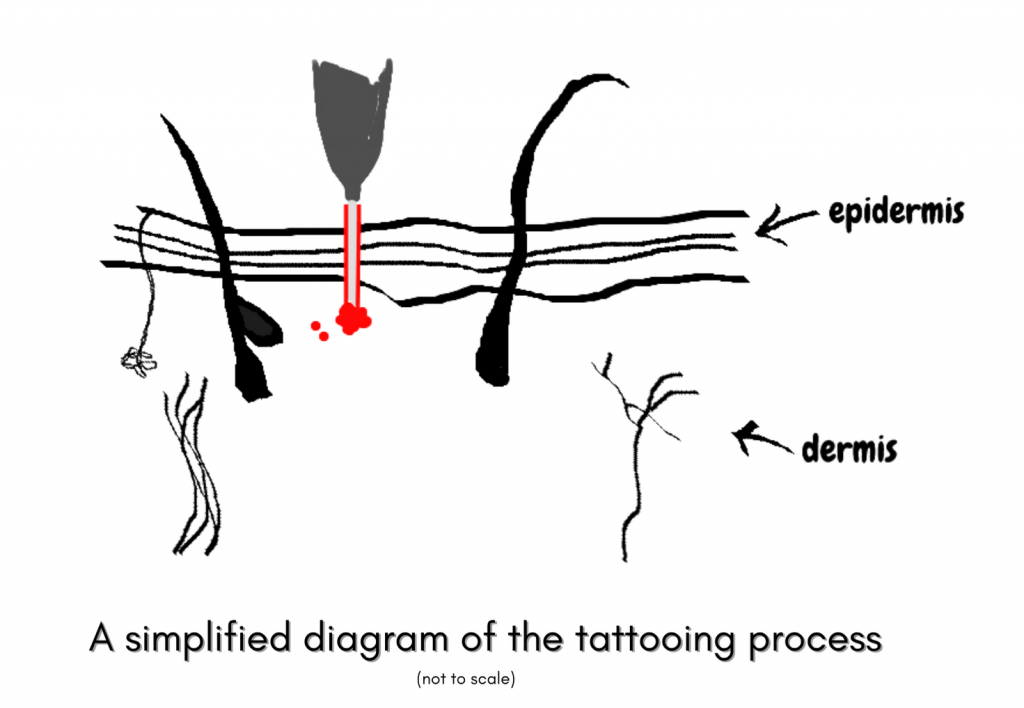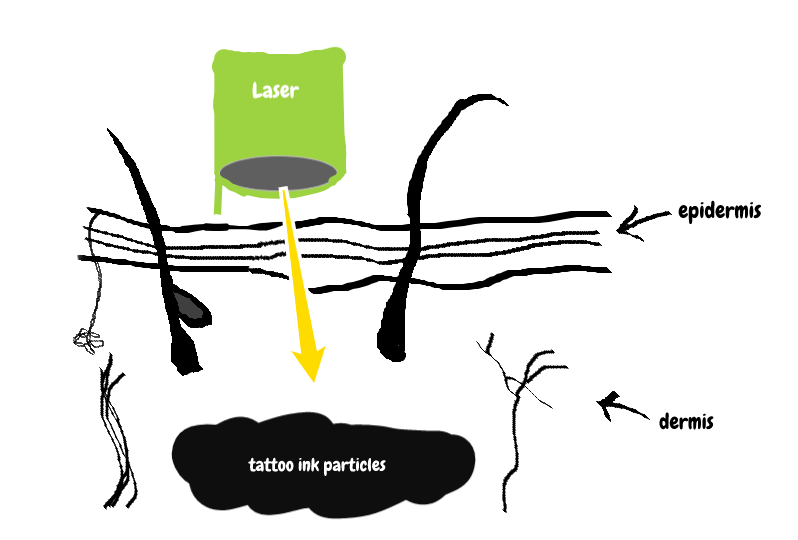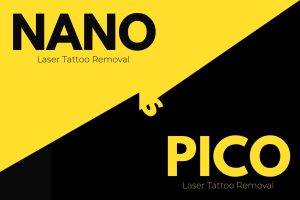
The decision to remove a tattoo is no less meaningful than the one you made for getting the tattoo in the first place. Before you set off on this journey, it is important to be well aware of the tattoo removal process. This will help you in two ways. It’ll help you manage your expectations and stay patient throughout the removal process. Secondly, it’ll help you understand the role your own body plays in the treatment process – and what you can do to achieve the best possible results.
How does tattoo removal work?

To answer this question, there is a need to understand the origins of a tattoo. What happens during the tattooing process? A tattoo machine punctures the skin at a rate of 50-3000 times per minute. It deposits tattoo ink into the dermis layer of the skin. The needle piercings trigger an inflammatory process at the location. Usually, the tattoo ink contains heavy metals like lead, zinc, mercury, etc. The immune system sees the ink particles as foreign substances or ‘enemies’ from the moment they enter the body. It steps into action with a single motive – to evict the ink particles out of the body. The white blood cells eat up the ink particles and carry them to the liver for disposal. Most ink particles are so big that the smaller white blood cells can’t engulf them. This results in the creation of a permanent tattoo. (For a detailed understanding of the tattooing process, click here.)
The tattoo continues to fade over time. This is because of the natural removal process carried on by the immune system, acting upon the smaller ink particles.
Laser tattoo removal speeds up and strengthens this removal process. A laser breaks up the ink particles too large for the body’s natural breakdown mechanism. Laser removal is effective and safer compared to surgical methods (excision and dermabrasion). It has emerged as the go-to choice of treatment.
How does laser tattoo removal work?

The laser machine emits quick bursts of light energy in very narrow frequencies. These energy pulses are selectively absorbed by the ink particles. Each pulse has the power to heat the ink particles by a thousand degrees, causing the ink particle to shatter into smaller fragments. Despite its high intensity capable of breaking pigment particles, the laser pulses do not affect the skin tissues. This is because the laser beams are too rapid to have any time to cause serious damage to the skin. The intense heat only causes a shockwave that makes the skin look frosty and slightly raised. This does not remain for long and is not a cause of worry. At present, there are two types of lasers. Q-switch lasers generate laser beams that travel in nanoseconds. On the other hand, Picosecond technology produces laser pulses at the speed of picoseconds. Furthermore, tattoo inks of different colors need lasers of different wavelengths. While black is the easiest to break down, light blue and green are a few of the more stubborn colors. 532 nm and 1064 nm are the most widely used laser wavelengths. They are capable of treating more than 95% of tattoo inks.
Yet, one laser session is not enough to disappear the tattoo. It is because the tattoo ink resides in multiple layers in the dermis. The laser attacks the ink particles in the uppermost layers. It is only when these particles are carried away by the body’s lymphatic system that the laser reaches the deeper layers. On average, people will go through 6-10 sessions before the tattoo fades away significantly. These sessions must be at least 4-8 weeks apart. The time between two sessions is crucial. It is during this time that the body’s immune system clears up the ink particles broken down by the laser. The immune system thus has a vital role to play. It is important to make sure that the body feels healthy and calm. Drink a lot of water (8-10 glasses a day is advisable), exercise but do not overdo it, and avoid stress. This will ensure that the immune system is working at its best. Consequently, the tattoo removal process will also work at its optimum capacity.
Before undergoing the laser treatment, many questions need due attention – What are the risks involved? Can you even do this? How much will each session cost? Which precautions to follow? Will it pain? And so on. For answers to all major laser-related questions, read our article: https://tattoosremove.com/everything-you-need-to-know-before-getting-a-tattoo-removed/




